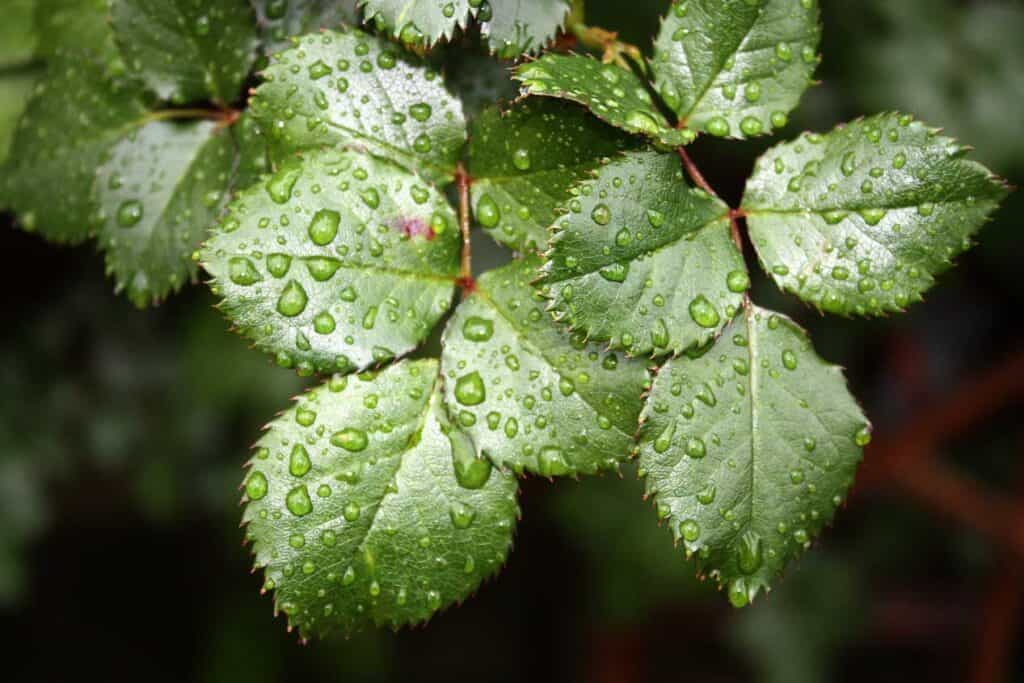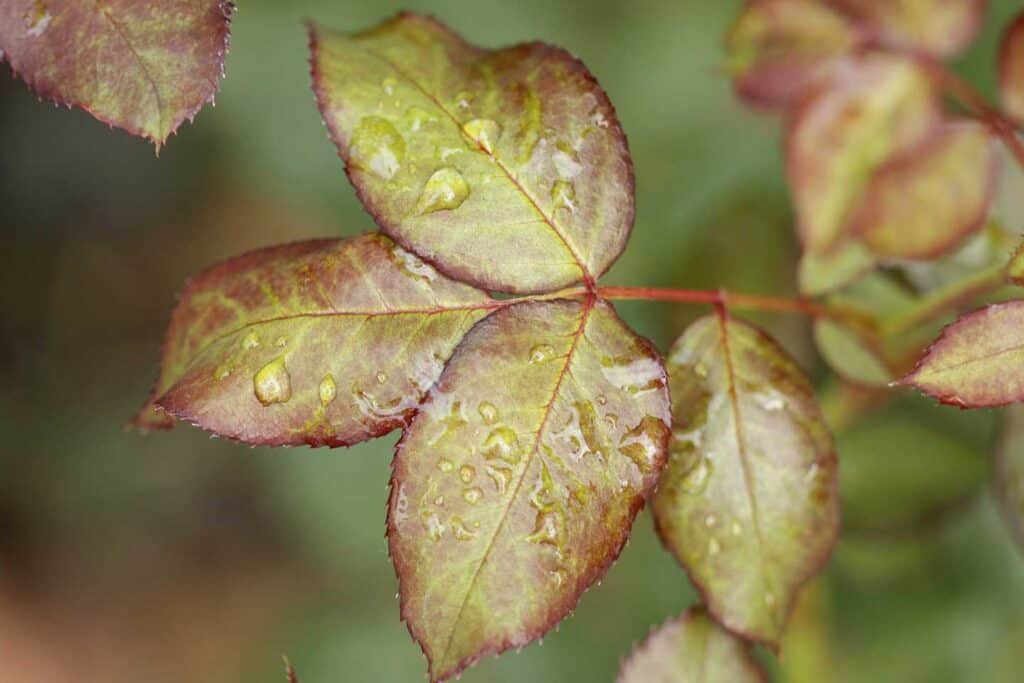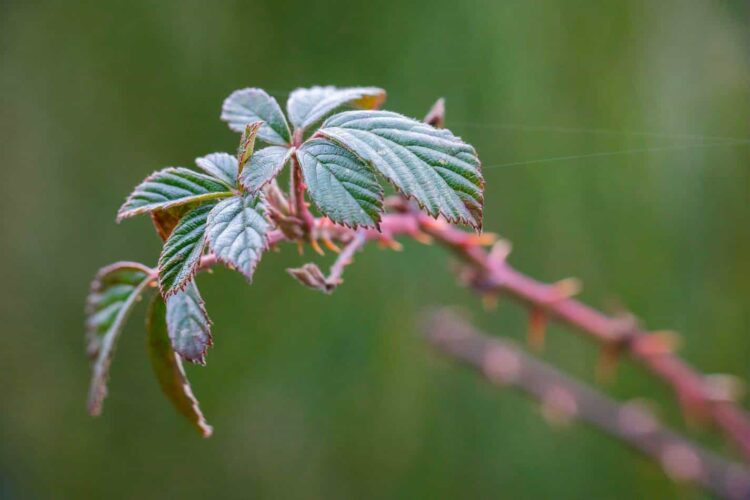Table of Contents
Stick insects are often portrayed as the type of creature that will eat anything going. That couldn’t be further from the truth, though as each species will have a slightly different preferred food source .
.
In this article, I will answer the question ‘what leaves do stick insects eat?’ as well as give you some useful tips on preparation and what you need to watch out for. In summary though…
Different stick insect species eat different types of leaves. Most species will eat, for example, bramble leaves, while many also enjoy privet. As long as the leaves are fresh and void of insecticides, you could try any leaves at all. If the stick insects don’t like them, they will not eat them. The same goes if the leaves are harmful to their species.
For more advice and information on keeping and looking after stick insects, check out my ebook on Amazon click here
(opens in a new tab).

Why All Stick Insects Need a Fresh Supply of Food
Regardless of the species, you need to make sure that your stick insect always has a fresh supply of food available. Not doing so can cause a lot of problems for your pet’s health, including putting them in a high state of stress.
Think about it. If there is only a small space to roam in, it is easy to become stressed, especially when not knowing where the next meal is going to come from. Stick insects feel this acutely.
But there can be differences between male and female. For example, females typically don’t move around much, attracting the males to them. However, males can travel great distances to fulfil their needs.
So if you own a male stick insect and there’s no food, he’s going to want to fly somewhere to find food. But he can’t. So without that constant supply of fresh food, you’re certainly going to affect his well-being.
The Importance of Keeping Leaves Fresh
The key thing to remember about stick insects in the wild is that they only eat fresh leaves. This is why many stick insect pet owners regularly mist the cages, to retain moisture.
Another reason to mist the foliage within your stick insect’s habitat is because this is how they get their water. They will not drink from a water dish as other pets might do; their only source of moisture is from the foliage around them.
is from the foliage around them.

But perhaps the best option for keeping any leaves you have fresh is to place them (attached to their stems/branches) in a small container or receptacle. Rest assured that adult stick insects will not fall into the water and the branches attached to the leaves will continue to support the plant. This might be a different story where nymphs are concerned, so if you do have nymphs then this is probably not going to be a good idea – at least until they grow a little.
When done correctly, a single feeding of leaves can last a whole week.
Feeding Bramble Laves to Stick Insects
Bramble leaves are among a stick insect’s favourite. And it’s also easy to find bramble in most places around the world.
Those in temperate countries will find that bramble stays green throughout the coldest months of the year, making it a good year-round option. Just make sure that when the bramble is harvested in the winter that it is free of any insecticides, etc.
You could even grow your own bramble bushes at home for a safe, constant supply of food for your stick insects. However, know that the brighter green leaves are sometimes toxic to stick insects; they don’t automatically ignore these types of leaves either.
Let these smaller leaves grow until they become a dark green colour. These large, dark green leaves are perfect for your stick insects.
Can Stick Insects Eat Eucalyptus Leaves?
Look online and there are a lot of questions regarding eucalyptus leaves and stick insects in the debate over what leaves can stick insects eat. They can eat eucalyptus leaves , but certain species like them more than others.
, but certain species like them more than others.
For example, the Thailand stick insect generally prefers bramble to eucalyptus. On the other hand, stick insects native to Australia are able to eat eucalyptus leaves without any problems.
to eucalyptus. On the other hand, stick insects native to Australia are able to eat eucalyptus leaves without any problems.
Fresh eucalyptus doesn’t require any real preparation. The only aspect you need to consider is the consumption of water of the plant. Eucalyptus consumes much more water than bramble, so if you have these sitting in a vase as described above, check its water levels regularly to make sure that the plant hasn’t used it all and then dries out.
Expect to have to change/top-up the water far more often than with bramble. Nevertheless, as we mention countless times across our website, it’s always good to give your stick insect a varied diet.
Oak and Hazel Leaves are Excellent Summer Food Sources
Oak leaves are another popular food for stick insects. They’re large and just a few leaves could completely fill your insect enclosure. If you don’t like the idea of spending a long time trying to source other plants, oak leaves are a great alternative. The same goes for hazel leaves, which have similar characteristics to oak leaves.
The downside to both of these food sources is that they’re only green for a few months of the year. But if you want to save your brambles for the winter, switching to oak and hazel during the summer months is a great idea.
Just make sure that you remove any brown parts from the leaves, especially if you’re using leaves from older trees or you are getting close to autumn; as we’ve mentioned many times, stick insects prefer leaves that are fresh and green.
What About Ordinary Privet Hedges?
Look closely at a privet hedge and you may see little pieces of the leaves missing. Caterpillars use it as a primary food source, but some species of stick insect have also become accustomed to these leaves.
The golden-eyed stick insect, native to northern Peru, is one such insect that thrives on privet hedge leaves. So it’s worth trimming your hedges by sections to take full advantage of this food source.
It must be said though that most stick insect species do not eat privet leaves , so do some research to make sure that they are suitable for your particular species.
, so do some research to make sure that they are suitable for your particular species.
Stick Insects Love Rose Bush Leaves
Rose bush leaves are another food source for stick insects. Any stick insect that eats bramble leaves will also eat rose bush leaves. Unfortunately, rose bushes are not known for producing vast amounts of leaves, so consider this to be more of a special treat for your insects.
The leaves should be mature, so basically only available in summer. And you should refrain from buying any old rose leaves from the store. If you did not grow them yourself, they could be hazardous to your pet because of the possible presence of insecticides.
It’s common practice for commercial stores to prolong the lives of their plants by spraying them with heavy insecticides. Just don’t take the risk.

Are There Any Considerations for Young Stick Insects?
Young stick insects can eat the same food as their adult counterparts and there are no differences regarding the food you should provide. However, the way in which you present that food is different.
Stick insects that have not yet reached full size are in danger of not being able to climb out of water they fall into. Adult stick insects are more than capable of climbing out, but their younger brethren are not. This is why it is often considered best practice to place a mosquito net or some pieces of tissue paper over the openings to water.
Nymphs can drown in a matter of seconds if you do not put these protections in place.
A Summary of What Leaves Stick Insects Eat
In short, most stick insect species will eat the leaves of common plants found in your garden. You just have to check by doing a little research beforehand, just in case. This will only be a problem if you are keeping more exotic species of stick insect .
.
Just make sure that there are no insecticides on any of the leaves and that you are only providing fresh, moist, green leaves. Stick insects are choosy and will not eat anything else.
Maintain a fresh supply of food and your stick insect will thrive.

